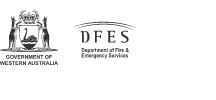
This project is improving metrics for identifying bushfire risk, guiding suppression tactics and supporting prescribed burning operations. This will include having quantitative detail describing the metrics, constraints, limitations and potential applications.
The outcomes will include improved accuracy of fire simulation systems and fire danger ratings systems, added value to seasonal forecasts and better interpretation of landscape condition monitoring systems, leading to enhanced community safety, better preparedness and reduced fire impacts.
Understanding how the dryness of the landscape influences the likelihood and nature of fires is critical for risk planning for fire and land managers.
Despite a large amount of prior research and a plethora of landscape dryness products available; substantial knowledge gaps persist relating to how well existing metrics of dryness can deliver critical operational intelligence; for example, when and where fires may occur, when large fire complexes are more likely, when conditions are suitable for prescribed burning and equally when bushfire risk is negligible.
Landscape dryness information has been identified by the Australian Fire Danger Rating System (AFDRS) as a critical input for improved risk management. Land managers have identified landscape dryness as an important input to prescribed burn scheduling and implementation.
The need to identify appropriate indicators was identified as a priority by the AFAC predictive services group (PSG). This project has been developed by a team designated by the PSG.
This project is reviewing and evaluating how well current landscape dryness products deliver critical operational intelligence, identify landscape dryness thresholds for mission critical events, and developing approaches for mapping landscape dryness to deliver operational intelligence.
The outcomes will include improved accuracy of fire simulation systems and fire danger ratings systems, added value to seasonal forecasts and better interpretation of landscape condition monitoring systems. This will lead to enhanced community safety, better preparedness and reduced fire impacts.
| Date | Type | Title |
|---|---|---|
| 2 May 2023 | Presentation | Thomas Duff - 2023 Natural Hazards Research Forum presentation |
| 19 June 2025 | Presentation | Jane Cawson - Natural Hazards Research Forum 2025 presentation |








